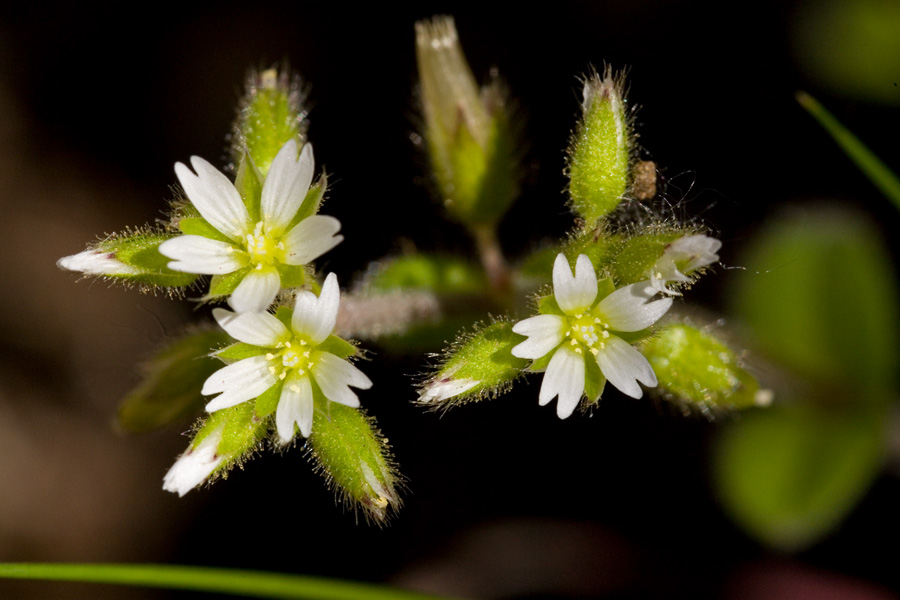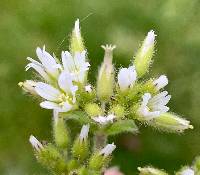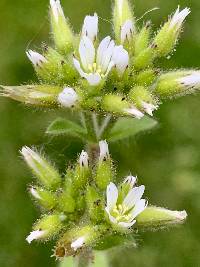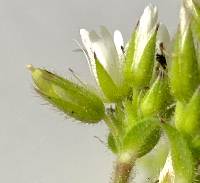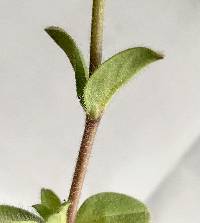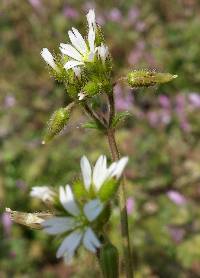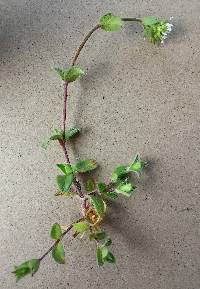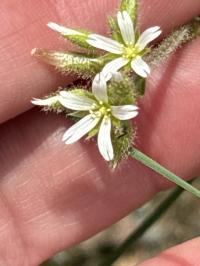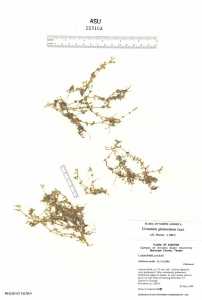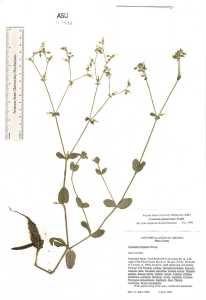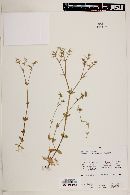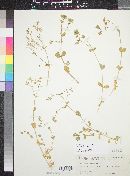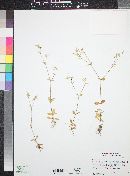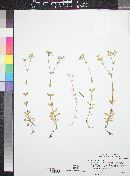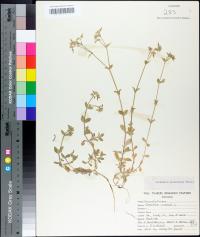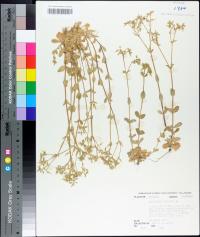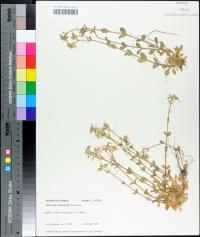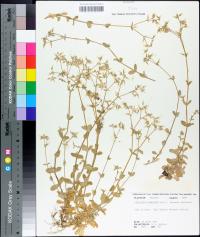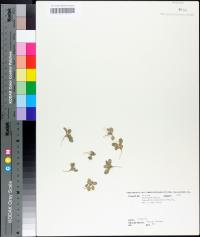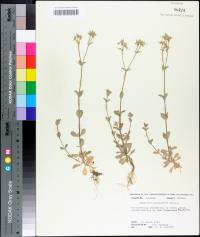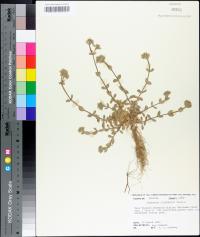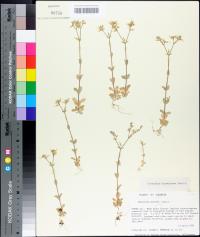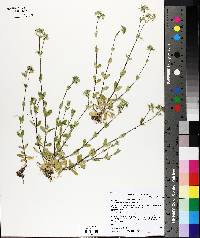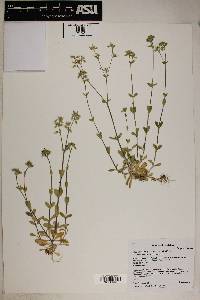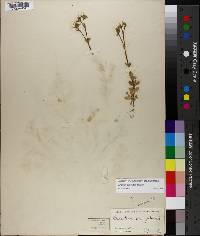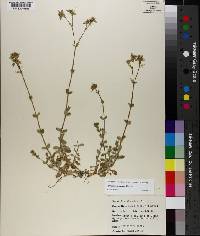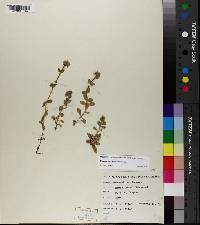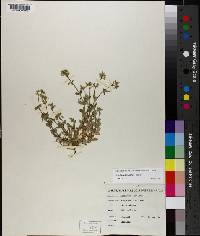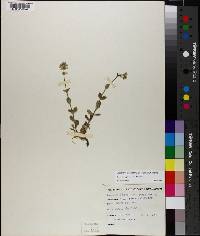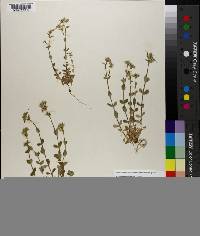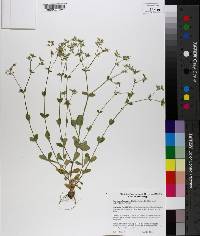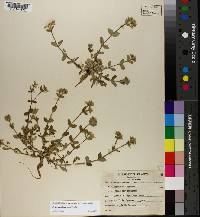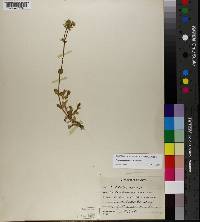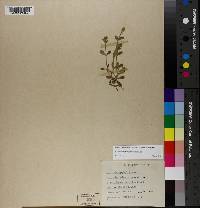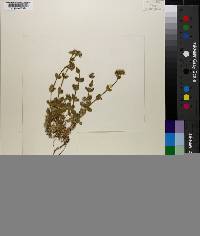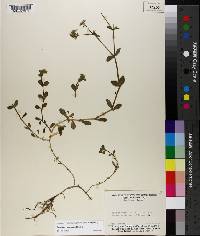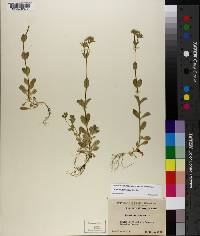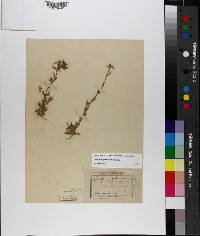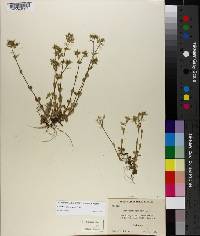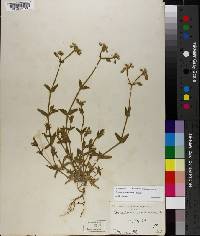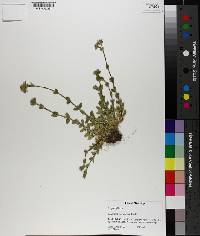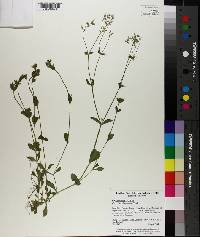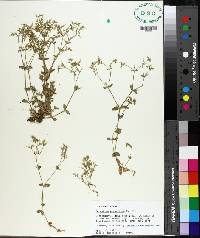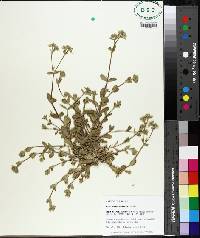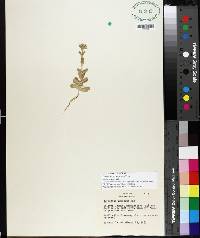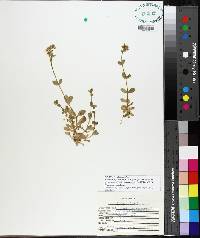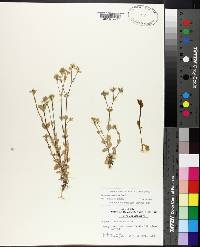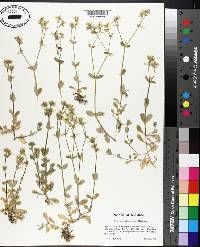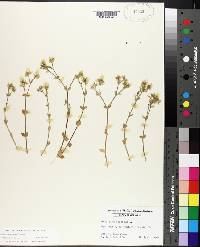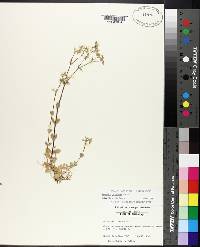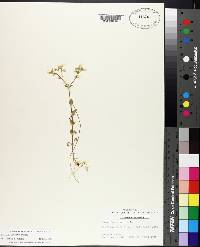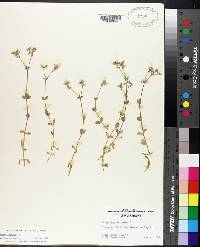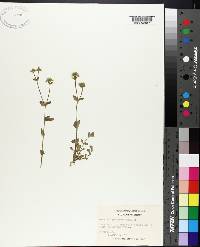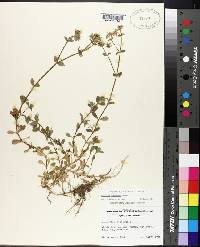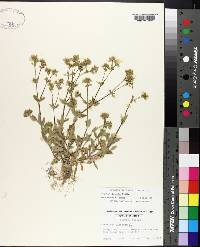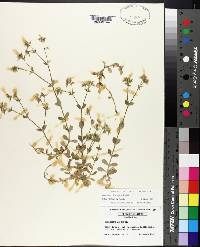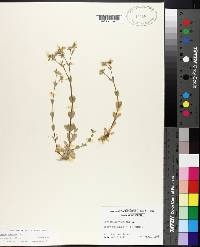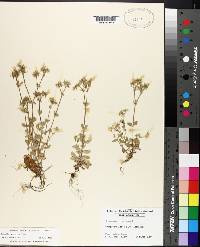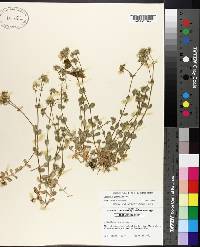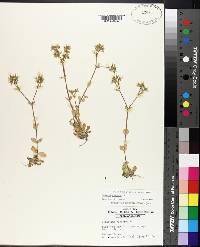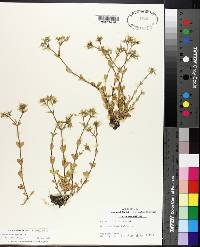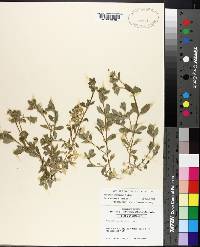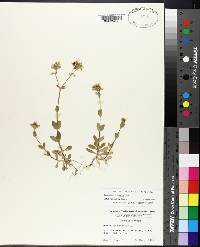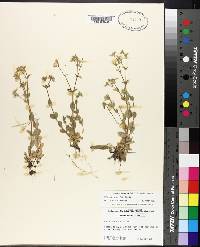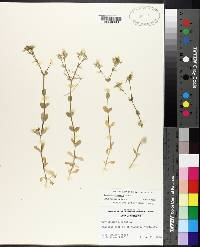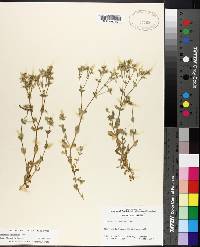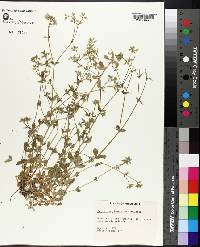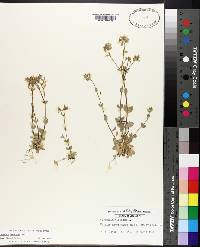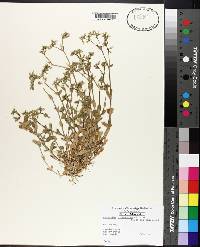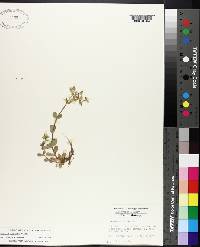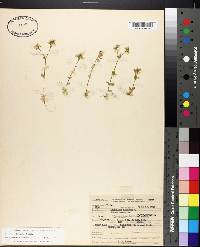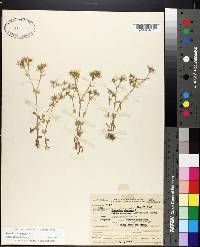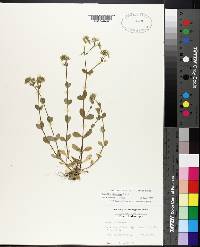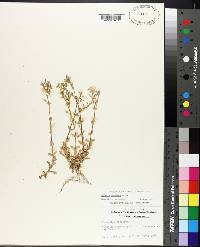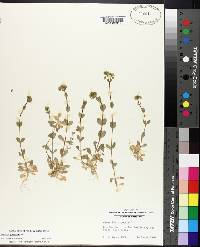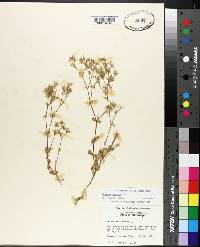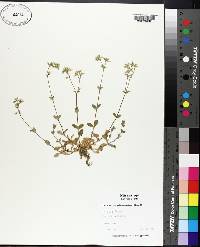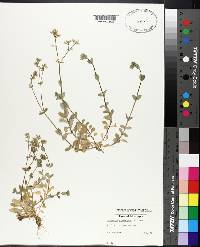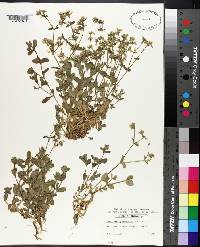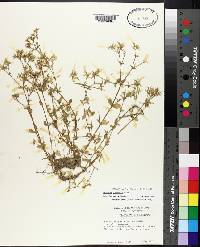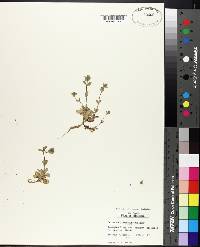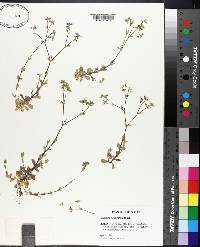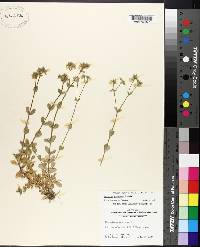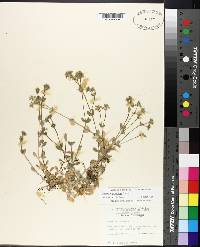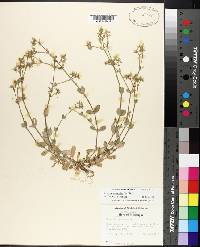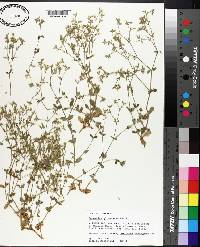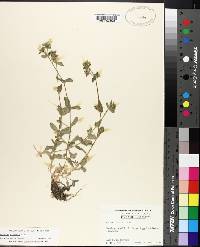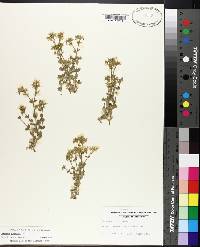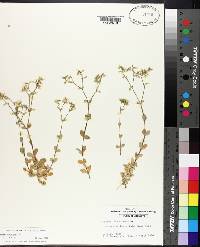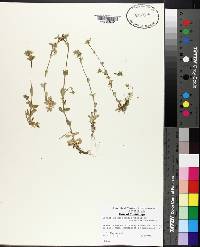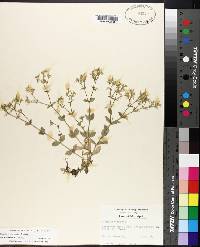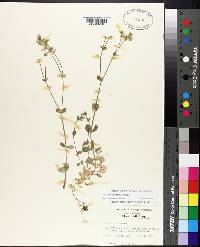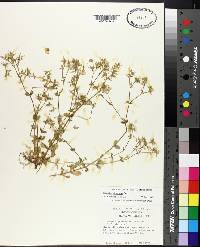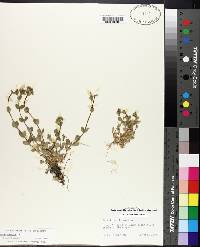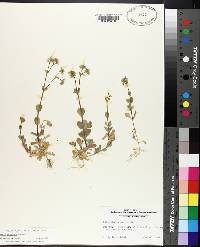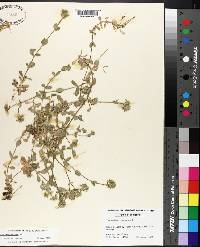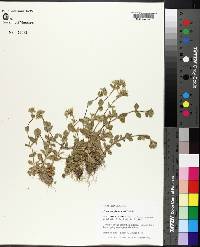Cerastium glomeratum
|
|
|
|
Family: Caryophyllaceae
Sticky Mouse-Ear Chickweed, more...sticky chickweed
[Cerastium acutatum Suksdorf, moreCerastium glomeratum var. apetalum (Dumort.) Fenzl, Cerastium ovale Pers., Cerastium pilosum , Cerastium rotundifolium Fisch.] |
Plants annual, with slender taproots. Stems erect or ascending, branched, 5-45 cm, hairy, glandular at least distally, rarely eglandular; small axillary tufts of leaves absent. Leaves not marcescent, ± sessile; blade 5-20(-30) × 2-8(-15) mm, apex apiculate, covered with spreading, white, long hairs; basal with blade oblanceolate or obovate, narrowed proximally, sometimes spatulate; cauline with blade broadly ovate or elliptic-ovate. Inflorescences 3-50-flowered, aggregated into dense, cymose clusters or in more-open dichasia; bracts: proximal herbaceous, distal lanceolate, apex acute, with long, mainly eglandular hairs. Pedicels erect to spreading, often arcuate distally, 0.1-5 mm, shorter than capsule, glandular-pubescent. Flowers: sepals green, rarely dark-red tipped, lanceolate, 4-5 mm, margins narrow, apex very acute, usually with glandular hairs as well as long white hairs usually extending beyond apex; petals oblanceolate, 3-5 mm, rarely absent, usually shorter than sepals, apex deeply 2-fid; stamens 10; styles 5. Capsules narrowly cylindric, curved, 7-10 mm; teeth 10, erect, margins convolute. Seeds pale brown, 0.5-0.6 mm, finely tuberculate; testa inflated or not. 2n = 72. Flowering throughout growing season. Arable land, waste places, roadsides; 0-1800 m; introduced; B.C., Nfld. and Labr. (Nfld.), N.S., Ont., Que., Yukon; Ala., Alaska, Ariz., Ark., Calif., Conn., Del., D.C., Fla., Ga., Idaho, Ill., Ind., Kans., Ky., La., Md., Mass., Mich., Miss., Mo., Mont., Nev., N.J., N.Mex., N.Y., N.C., Ohio, Okla., Oreg., Pa., R.I., S.C., Tenn., Tex., Va., Wash., W.Va.; Europe; introduced and common in Mexico. Cerastium glomeratum often has been reported as C. viscosum Linneaus, an ambiguous name; see discussion under the genus.
Annual herb with a slender taproot 5 - 45 cm tall Stem: upright or ascending, branched, hairy, glandular (at least above). Leaves: opposite, more or less stalkless, 0.5 - 2.5 cm long, 2 - 15 mm wide, egg-shaped to reverse egg-shaped, with long, spreading hairs. Lower leaves reverse egg-shaped to reverse lance-shaped or sometimes spatula-shaped. Inflorescence: a dense cluster (cyme) or more open cluster (dichasium) of three to fifty flowers subtended by hairy, lance-shaped bracts. The bracts are entirely green and lack scarious (dry, thin, and membranous) margins. Flowers: white. Stalk upright to spreading, often curved, to 5 mm long, glandular-hairy. Stamens ten. Styles five. Sepals: five, distinct, 4 - 5 mm long, lance-shaped with a very pointed tip, with long, forward-pointing white hairs and glandular hairs that protrude beyond the tip. Petals: five, white, 3 - 5 mm long (shorter or about equaling the sepals), reverse lance-shaped, deeply two-lobed, clawed. Fruit: a dehiscent capsule (opening by ten short, upright teeth), 6 - 10 mm long, 1.5 - 2 mm wide, longer than the sepals, narrowly cylindrical, curved. The stalks are shorter than the capsules. Seeds numerous, pale brown, egg- to kidney-shaped, dorsally grooved. Similar species: Having entirely green, non-scarious bracts helps to distinguish this species, Cerastium brachypodum, and C. nutans from most other Cerastium in the Chicago Region. Cerastium brachypodum differs by not having strongly pointed sepals. Cerastium nutans differs by having fruit stalks that are longer than the capsules. Flowering: April to May Habitat and ecology: Introduced from Eurasia. This rare lawn weed is mainly found south of the Chicago Region. Occurence in the Chicago region: non-native Etymology: Cerastium comes from the Greek word keras, meaning horn, referring to the horn-like shape of the seed capsule. Glomeratum means clustered. Author: The Morton Arboretum From Flora of Indiana (1940) by Charles C. Deam There are reports of this species from all parts of the state while the few specimens I have are from the southern part. From the number of wrongly determined specimens in our herbaria I think most authors did not understand the keys in our manuals and all reports should be evaluated on the basis of this experience. My specimens are from fallow and pasture fields and open woodland. |

